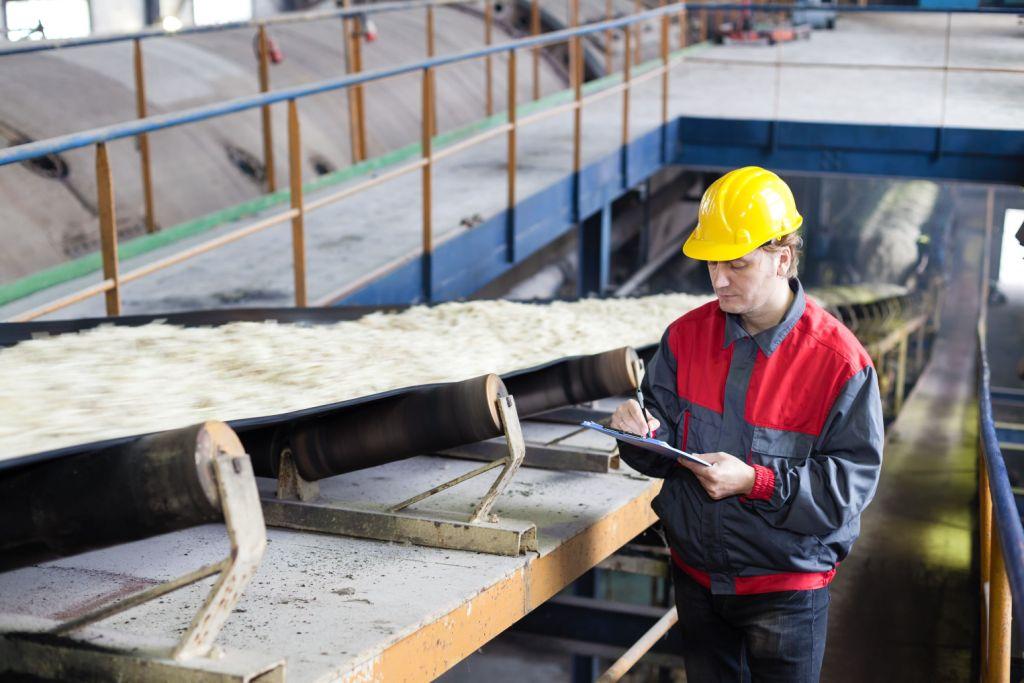30.10.2023
Safer material handling and ATEX
In 2008, there was an explosion in a sugar refinery near Georgia, United States, in which 14 people died. Sugar production is more dangerous than people realise, involving combustible dust with the potential to explode or burn. The disaster was a turning-point in raising awareness of dust explosions — but are manufacturers doing all they can to mitigate the risks? Stephen Harding, managing director of materials handling specialists Gough Engineering, explains the vital role of materials handling equipment in improving worker safety and reducing the risk of further incidents.
Sugar is combustible when it is finely divided or dispersed as dust clouds in air. Because of this, dust explosions can occur throughout the sugar production process — including during heating, sieving, transferring, loading or storing. This makes it imperative to apply safety regulations and to meeting a client’s requirements in their defined ATEX regulations.
The ATEX directives — short for Atmosphere Explosible — are two EU regulations that, since they were established in 2003, prescribe the minimum safety requirements for workplaces and equipment used in explosive atmospheres.
The regulations have a vital place in the food and drink industry, including flour or sugar plants. Workers in these plants are exposed to daily risks like high temperatures and sugar dust. The potential for another industrial disaster, as seen in 2008, must be avoided at all costs. Fortunately, a solution exists in material handling equipment.
Lessons learnt
Sugar cane refineries, and sugar beet factories, use a variety of automated material handling solutions like bucket elevators, conveyors and sieves. These systems are used to filter or transport sugar to different areas of the production line, frequently in large volumes.
It’s vital that dusk leakages are minimised at all times — but how do explosions in sugar refineries occur? To answer this question, a 2008 joint study by the Health and Safety Executive (HSE) and Health Services Laboratories (HSL), Dust Explosion in Sugar Silo Tower: Investigation and Lessons Learnt, examined a dust explosion that occurred in a British sugar refinery in Norfolk, UK, in 2003.
“Evidence suggests that from the very early stages, the explosion progressed through the system in both directions,” states the report. “Because of the linking chute, the pressure in the production/bulk export elevators would also have increased during these early stages and airflow and vibration would begin to stir up sugar fines to form an explosive cloud.”
Exposure to oxygen and an ignition source caused the cloud of sugar fines to combust. To avoid this, a recommended solution is the use of sealed, or closed, chutes and feeders that prevent dust from escaping and making contact with the air. Closed feeders can also transport the sugar more accurately and consistently without leaks or spillages. The equipment should also be earthed to reduce risk of an igniting electrostatic charge.
But what about the other main contributing factor cited in the HSE and HSL’s report: vibration? Vibrations caused by equipment are an issue in food manufacturing, meaning raw materials are prone to spoilage and spillage. Manufacturers can rely on Industry 4.0 technologies, like sensors with condition monitoring, to assess the vibrations caused by equipment. This is useful for preventative maintenance, to predict the health of machinery and anticipate when it might breakdown or require maintenance.
But, vibrations are a more pressing issue than a cause for spillages in sugar refining. In some circumstances, vibrations can create combustible dust clouds.
Automated conveying
As a manufacturer of materials handling equipment for food processors, Gough Engineering recognises that managing dust emissions is one the biggest challenges in conveying powders. To address the above challenges, Gough Engineering has developed the Gough Tubular Feeder, an automated conveying system.
Covers, with gaps sealed as much as possible, can reduce dust to reasonable levels during the conveying process. That’s why the Gough Tubular Feeder is fully-enclosed to give a smooth, consistent and predictable product feed. The system’s enclosed design also means that combustible products, like sugar fines, cannot infiltrate the atmosphere.
The system is driven by twin vibrator motors mounted on roster mounts or coil springs. This gives a smooth vibration that is designed to be for feeding granular and powdered products through harsh environments. The machine has no exposed moving parts, so risks of damage or contamination are considerably lower than with other open feeders. In terms of cleaning and maintenance, Gough’s tubular feeder is fitted with removable end caps to make sure cleaning is as quick and safe as possible.
Choosing the right material handling equipment for a production line depends on varying factors. They include the transported food material’s particles, properties and behaviour. But another vital consideration is the equipment’s design, such as its vibratory motion type and drive mechanism, and whether it complies with the ATEX directives.
Key ATEX regulations include ATEX Category 2D for hazardous areas categorised by high-risk power and dust, and Category 3D for areas with medium-risk powder or dust.
This is where the support of a material handling equipment specialist is vital for making the right choice. With its own in-house design team and over 80 years of experience, Gough Engineering can provide application knowledge for designing and manufacturing the right solution for material handling. This support is crucial for improving worker safety and mitigating the risk of incidents in sugar refineries.
www.goughengineering.com

Powdered material travels along an inclined conveyor
« Back
|